Hagen (pop. 189k, density 1,200 ppkm2), has had ‘decades of planning culture that is car-friendly’ (p.132*). In some ways it is similar to Hamilton (pop. 185k, 1,700 ppkm2). As an example, in 1988, around 65% of primary school children walked to school (link). The 2018 census showed that only 22% of primary school students walked, while the average for all school students in 1988 was 44% (link). A 2018 Hagen report* provides a history on walking to school - ‘Children and young people are increasingly travelling to school in the back seat of a car. Today, for example 20-50% of children in primary schools can no longer walk independently. In 1970, around 90% of children travelled alone. The fact that children are driven to school by their parents has a number of negative consequences: in addition to the fact that the children no longer get enough exercise, they do not get to know their living environment. In particular, the volume of traffic in front of schools is increasing significantly, which leads to difficult and sometimes chaotic traffic situations. These in turn ensure that fewer and fewer children come to school on foot or by scooter, a continuing spiral of increasing car traffic at schools. Since children in primary schools do not learn to be mobile independently, the problem also shifts to secondary schools. This also applies to cycling, and children and young people who don’t cycle won’t do so as adults either. It is therefore urgently necessary to ensure a change in the mobility culture here’. (p.119-120*). Hagen is ‘missing support from for cycling from politicians and administrators ... The cycling infrastructure is also criticized. Due to the often poor quality of the cycle paths and frequently changing forms of design, cyclists often feel unsafe ... The fact that the proportion of bicycle traffic in the modal split is so low cannot therefore be attributed solely to the unfavourable topography’ (p.24-25*).
*Page references come from the 2018 ‘Cycling concept for the city of Hagen’ report
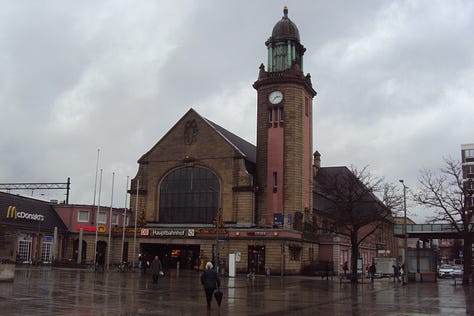

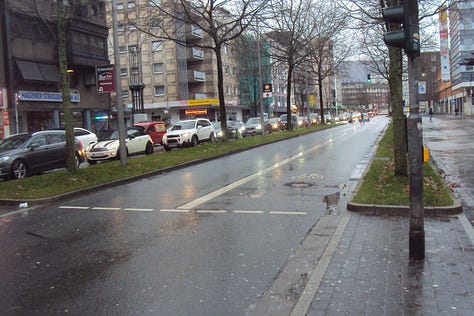
My day visit to Hagen started at the attractive 1910 central rail station, of a nice scale and with a good-sized station square with bus stops on the city side. Once across the road (Graf-von-Galen-Ring) looking back at this first road crossing, which has 5 lanes, one for car-parking, and four movement lanes, the kerbside movement lanes have bicycle stencils in them. Maybe this lane is a ‘mixed traffic area (Shared Space)’ (p.84) or a cyclist / bus lane (p.146). Many German cities have a road like Graf-von-Galen-Ring road between the station square and the start of the city centre area. To me this road did not feel as forgiving or comfortable as in other German cities.
Once across Graf-von-Galen-Ring there is a less than 1 kilometre walk along Bahnhofstraße to the ‘business center, the town hall as well as central cultural institutions such as the theatre and the Art Quarter’ (p22*). Bahnhofstraße has a lot of on-street car parking. Once near the centre the layout of the Christmas market is different but works really well, styled as a pathway taking you to the centre of the pedestrian retail area, with all the normal retail options. But what Hagen cannot hide is retail decline. Here it can be seen in a mall off the main pedestrian area. I think Hagen’s politicians and bureaucrats are missing something. Maybe other similar sized German cities have more entry-level stalls / businesses ready to replace outdated retail or maybe the time it takes to repurpose retail space to other uses is too long.


Like almost all German cities, there is a good number of buses travelling as close to the city centre as they can. This takes me back to the start of my visit, which oddly had no Christmas market stalls at the rail station square, which most similar German rail station squares would have.
Hagen is an example of how different Germany cities can be. It is normal for Hagen to be ranked as the ‘most bicycle-unfriendly city in Germany’ in surveys: with 1-3% of people cycling, it is lower than Hamilton’s proportion of cyclists (2.4-5.4%). Other cities in Germany have higher percentages of cyclists than an average city in the Netherlands. For Hagen ‘the width of the cycle paths, the traffic lights and illegal parking on cycle paths were rated particularly poorly. The feeling of safety for cyclists received a poor grade and riding with vehicles in mixed traffic is perceived as particularly stressful ... [the] Hagen cycling network consists more of gaps than of a sensible cycle-friendly infrastructure ... Not only cyclists would benefit from a bike-friendly city of Hagen, which is currently in the top negative places when it comes to air and noise pollution’ (from ADFC General German Bicycle Club Hagen local group).
The travel mode share for Hagen 2018 (p.25) {Hamilton 2018} is: motor vehicle 54-72% {81% work-56% education}; public transport 15-20% {2.8% work-10.5% education}; bicycle 1-3% {2.4% work-5.4% education}; and walking 9-20% {4.8% work-22.5% education}.




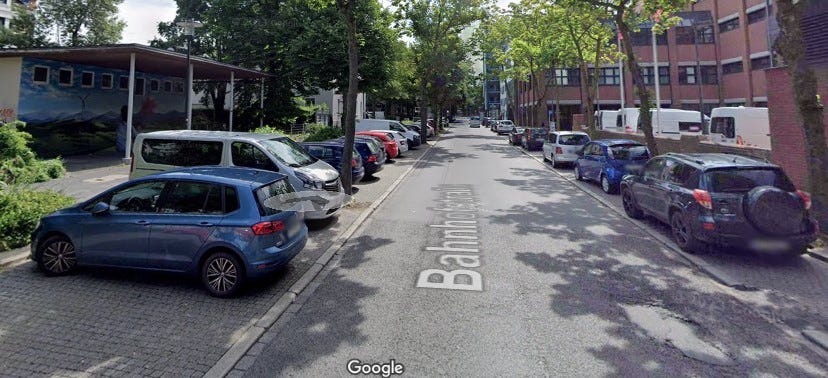
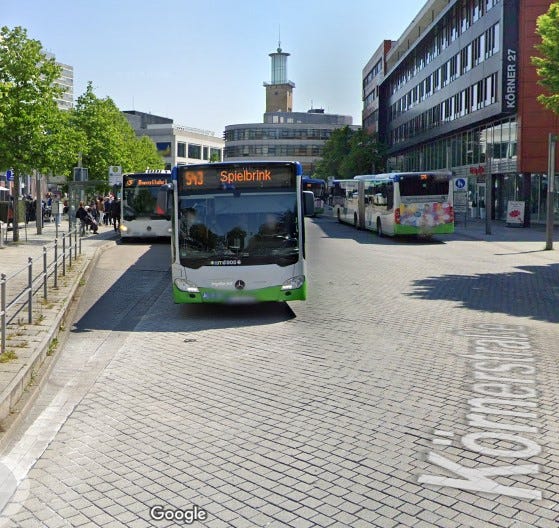
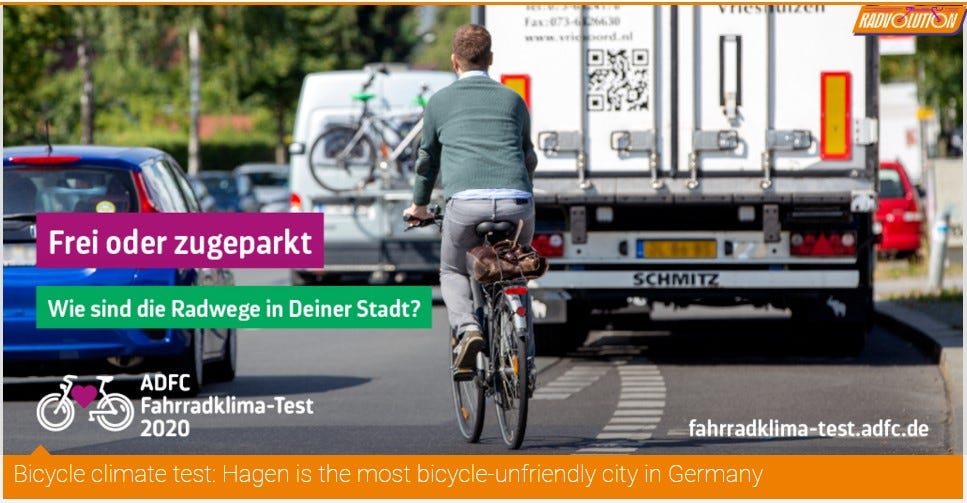
Thank you for sharing your experience, very interesting and attractive content. Wish to hearing from you more!!